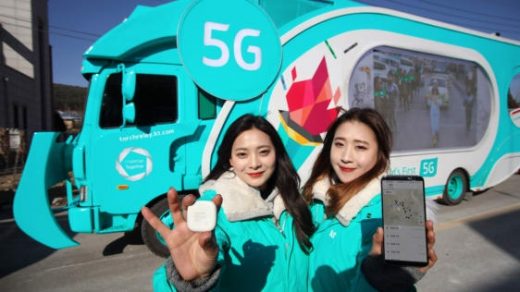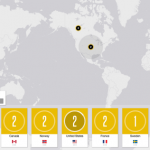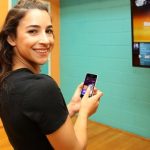The Winter Olympics Will Be A Coming-Out Party For 5G Wireless
The world-record speed for a bobsled is 125 mph. Whether or not any teams beat that during the Winter Olympics in Korea, they will collectively set a different speed record: for beaming data from a bobsled to a cell tower, at several gigabits per second. Bobsledding is one of the sports, along with figure skating, that wireless provider KT Corporation (formerly Korea Telecom) will use to highlight 5G wireless technology. Intel and Samsung will provide tech for many of the demos, which the lucky few attending the games will get to see.
“The Olympics is a showcase for the types of things that are probably going to roll out earlier in South Korea maybe than anywhere else, given that they frequently are on the leading edge of the next iteration of cellular technology,” says Gartner analyst Bill Menezes. Rival carriers SK Telecom and LG U+ will also be showing off 5G, but KT has talked more about what it has planned for the games.
The 5G technology standard was just finalized in December. All three Korean carriers aim to deploy it in 2019, at least to some extent. Networks specially built for the Korean carriers in the Olympic towns of Pyeongchang and Gangneung will demonstrate what’s possible. (U.S. carriers are shooting for broad rollout in 2020.)
5G provides far more bandwidth than anyone needs for checking email—a bad idea anyway, if you’re a bobsledder in the middle of a race. The tech companies will instead highlight what 5G is really good for: beaming video (at HD-and-above resolutions) and VR in close to real time. The delay in transmitting 5G streams can be as low as 1 millisecond—much less than a human can notice. Attendees will be able to watch live feeds from bobsledders’ helmet-mounted cameras or switch between multiple cameras placed along the cross-country skiing route to follow races, for instance, using Samsung 5G-equipped tablets. (The technology will require a whole new generation of compatible smartphones, tablets, and other gadgets.)
Maybe the coolest display will be a technology called TimeSlice, which uses about 100 cameras, arranged in a 180-degree arc in the Ice Arena. The footage is combined to create three-dimensional videos and freeze-frames of figure skaters that viewers can rotate around, a bit like watching Neo dodge bullets in The Matrix. Here’s a demonstration from another sporting event:
5G-equipped cameras will also capture VR footage from the Ice Arena and from cross-country races. Those streams will be beamed to 5G-equipped Intel VR headsets at the Olympics. For those of us who aren’t at the Olympics and will have to wait for 5G, NBC and Intel are also providing an app for VR viewing of over three-dozen events in skiing, curling, skeleton, and more.
Fast Company , Read Full Story
(17)














